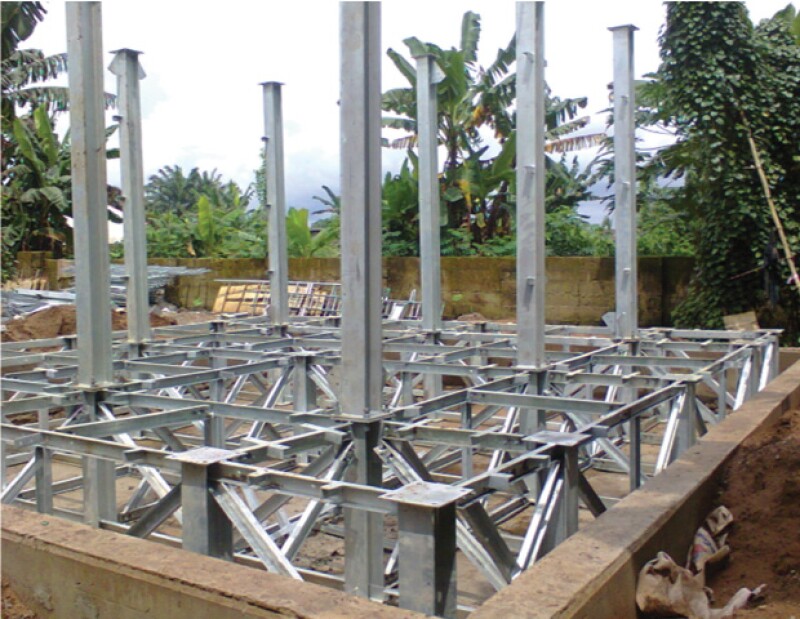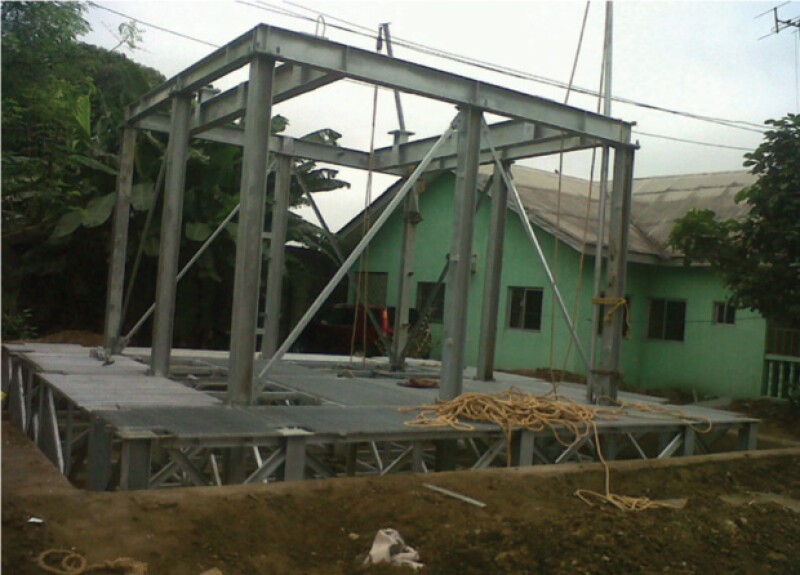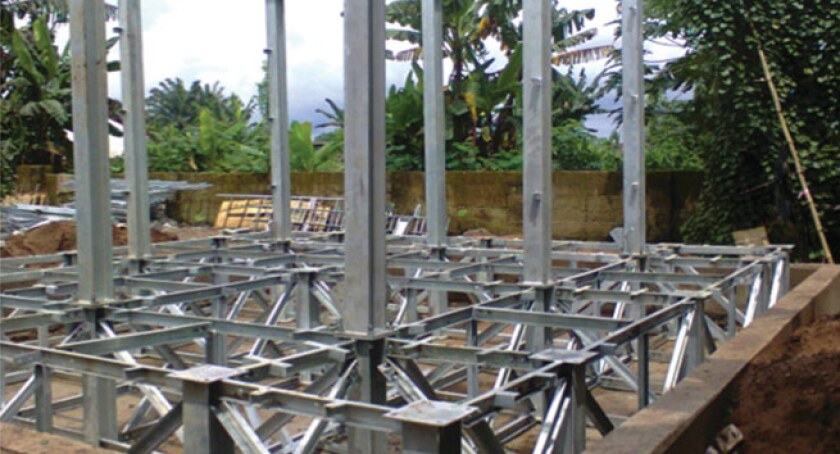A structural engineer by training, Dr. Tony Monda returned to Kenya in 2001 and started consulting to make the heavy tower designs being rolled out across East Africa more efficient. As Tony’s clients increasingly wanted supervision from tower design and manufacture to installation and maintenance, his business TKM Maestro was transformed from a focus on structural design to end to end turnkey infrastructure service provision. Now TKM has come up with a revolutionary compact tower design, installed at nearly 300 sites in Nigeria, Kenya and Gabon, on the MTN, Airtel, Safaricom and Orange Networks, which promise to reduce the cost and installation time of a multi-tenant tower by 30%.
TowerXchange: Please introduce TKM Maestro - what role do you play in the telecoms infrastructure ecosystem?
Tony Monda, Director, TKM Maestro:
TKM Maestro started life as a design engineering company, but developed into an end to end turnkey infrastructure company at the request of our clients. We have our head office in Nairobi, Kenya and also have fully fledged offices in Tanzania, Uganda, Rwanda, Nigeria and Ghana, and will be opening in Mozambique at the end of September 2014. We also have representative offices in South Sudan and the DRC.
The scope of our business includes any telecoms infrastructure, from the design and build of towers, data centres and fibre networks, to maintenance.
TowerXchange: How can MNOs and towercos reduce cost and time to market for multi-tenant towers?
Tony Monda, Director, TKM Maestro:
TKM Maestro have patented a compact tower design that uses less than half the space of a standard tower, and is 30% cheaper.
The solution is already working in the field and saving clients a lot of money. We’ve already supplied 250 of these compact towers to MTN in Nigeria, and a further 20 to other countries – mainly Kenya. We’re currently shipping eight to Airtel in Gabon, an order which came from someone I met at the TowerXchange Meetup Africa last year!
What makes our tower design unique, and what saves 30% of our clients’ budgets, is the elimination of the use of reinforced concrete in the foundation. We use a design similar to big lunchbox which we fill with ballast – any gravel or stone found near the site. Carrying cement and the equipment for casting concrete is a real challenge, especially for remote sites, while the reduced space requirement of our compact site can be critical in dense urban areas where real estate is expensive and scarce.
Erecting one of our compact sites requires just seven tower riggers. From breaking ground to a new site being on air typically takes 25 days, which is a saving of 10 days compared to a conventional site. It’s an all-bolted solution, with a bolted strut system, bolted equipment room on the clean floor level provided by our innovative foundation, and the tower is all bolted.
Ours is a robust, permanent solution but, unlike a conventional tower where the steelwork is literally stuck in concrete, our design is easily recoverable and relocatable, simply by dismantling the tower, equipment room, and foundation.
We manufacture the entire compact site in factory controlled conditions – it’s a TKM Maestro product, designed and supervised by TKM, and manufactured under license by our partners Ganges Internationale in India.

TowerXchange: Do you have a variation of this compact tower design suitable for co-location?
Tony Monda, Director, TKM Maestro:
Yes we recently released a co-location model with a stronger design suitable for the co-location of three to five tenants, with variants up to 60m high.
TXM Maestro is coming to TowerXchange to tell towercos and MNOs about a new way of building sites – we have the ability to build a co-locatable site that is quicker, easier and cheaper to build than a conventional tower.
With TKM Maestro’s compact site design now available, pouring concrete doesn’t make sense if you want to save space and money, even if you need wind load capacity for three to five tenants.
With TKM Maestro’s compact site design now available, pouring concrete doesn’t make sense if you want to save space and money, even if you need wind load capacity for three to five tenants
TowerXchange: What assurances can you give MNOs and towercos about the quality of your towers?
Tony Monda, Director, TKM Maestro:
Our towers comply with British and Eurocode standards for tower manufacturing, and we offer a 50 year warrantee guarantee.
TowerXchange: How did this revolutionary new compact site design evolve?
Tony Monda, Director, TKM Maestro:
Three years ago we were working with Huawei on the site design for a tower on a remote mountain top in a Kenyan National Park for Orange. It seemed to Huawei that the only way to install a tower on the site was to build an access road at a cost of US$400,000.
So the TKM Maestro engineering design team innovated to come up with a tower site design that could be airlifted by helicopter. We figured out the lifting capacity of the largest helicopter we could lease in Kenya, and reverse-engineered a modular design whereby all the tower site components could be airlifted to the site by the helicopter. We used the ballast system for a counterweight, instead of pouring concrete, and the site was executed in 45 days.
After an internal review we realised the site design could be adopted at other remote sites and at conventional sites where space, time and cost were important factors. Soon we had Safaricom and MTN’s independent engineers certifying the design, and we secured the aforementioned order for 250 sites with MTN Nigeria.
TowerXchange: Tell us about your current project with Airtel Gabon.
Tony Monda, Director, TKM Maestro:
Airtel Gabon had to put up eight sites at short notice after the national regulator insisted on provision of coverage within a short deadline. We had some stock of our compact towers in Nigeria, so we airlifted the entire sites from Lagos to Gabon in a manner which would not have been possible with conventional sites. The project is now complete.
TowerXchange: Are the majority of sites being rolled out in SSA now suitable for multiple tenants?
Tony Monda, Director, TKM Maestro:
With a couple of isolated exceptions, all the African MNOs tend to build towers with capacity for three to four tenants, as the potential future sale of towers to a towerco is at the back of everyone’s mind.
Taking this into consideration, even version 3.0 of our smallest compact tower model has capacity to add a second or even, in some cases, a third tenant. So if the MNO wants to sell the tower in future they can legitimately say it has capacity for multiple tenants.

TowerXchange: Given that the towercos tend to focus on build to suit opportunities with high probability of a second tenant, is there an opportunity for new tower developers to focus on these single tenant sites?
Tony Monda, Director, TKM Maestro:
TKM Maestro is interested in developing our own ‘middle market towerco’, adopting our low cost compact site design to build towers at locations that are less obviously attractive to additional tenants, which the towercos are often reluctant to build.
We’re in the process of establishing a small, build to suit focused towerco targeting 10-15 sites in Kenya by year end 2014 and 100 sites by Q3 2015 that will complement traditional towerco’s.
TowerXchange: Finally, please sum up how you would differentiate TKM Maestro from other turnkey infrastructure companies in SSA.
Tony Monda, Director, TKM Maestro:
TKM Maestro’s key strength is our engineering design unit, a critical pillar that many other turnkey infrastructure companies outsource. With engineering design at the core of our business, we truly provide end to end services even including R&D, and ownership of design. Our more thorough understanding of the product – whether applying to maintenance, tower design, or rollout of fibre – is built on the strong support of our engineering department.

